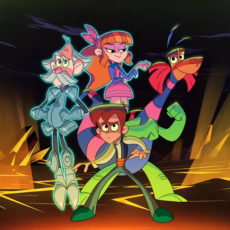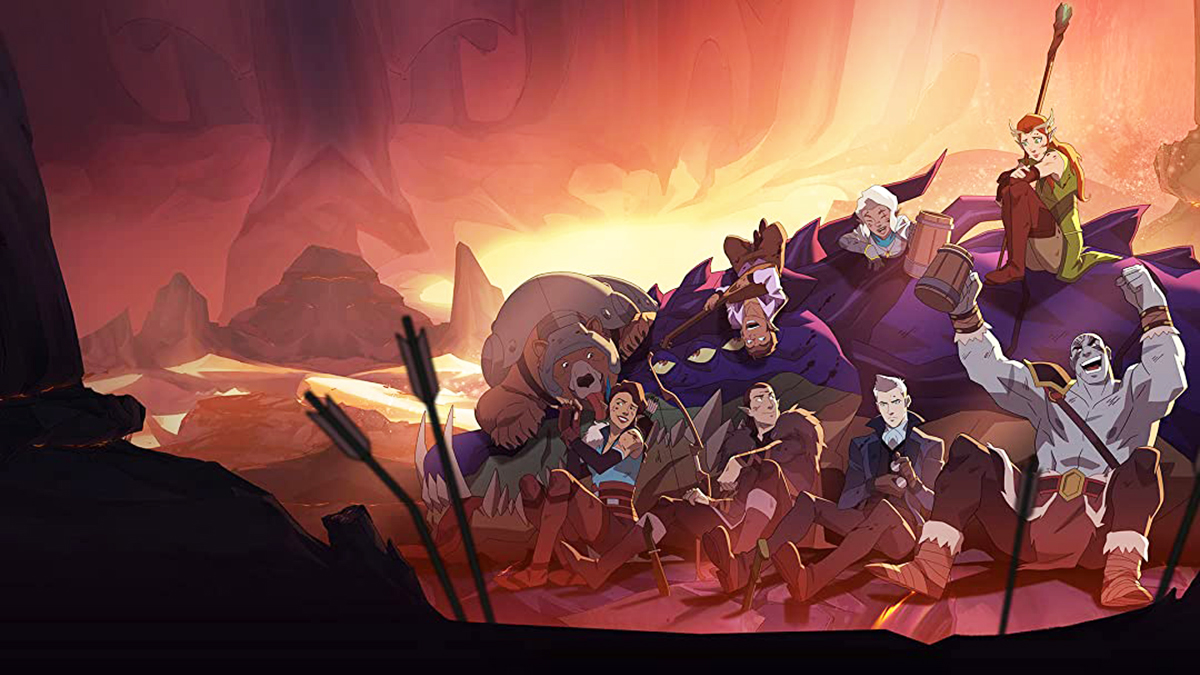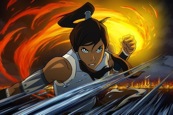In 2007, La Leyenda de la Nahuala by Ricardo Arnaiz was relesed on Halloween. It was recognized as the sixth animated feature film to be released from Mexico and was a big box office hit, so much so that it was one of the most successful films in the history of Mexican cinema. It garnered the attention of Ánima Estudios, which would go on to produce three sequels. The success of the films would be instrumental in turning the studio into the largest and most prestigious animation firm in Latin America. In an effort to expand their presence globally, they have been working on numerous international projects such as a theatrical adaptation of Top Cat for Warner Bros., Kung Fu Mangoo for DreamWorks, and the television series Pig Goat Banana Cricket for Nickelodeon. Recently, they partnered with the video streaming service Netflix in adapting the La Leyenda films into a television series that would be accessible to international audiences. The result is Legend Quest.

Taking place in the very early 1800s, Leonardo San Juan feels a bit like an outcast in his home village of Puebla. While this could normally be attributed to his being a teenager on the cusp of manhood, he also has the ability to communicate with ghosts such as the foolhardy Spanish knight Don Andrés and the curiously well-beyond-her-own-time schoolgirl Teodora. He has also befriended Alebrije, a rainbow-colored creature whose appearance to other shifts to how their minds perceive him to be. Life changes suddenly with the appearance of Queztocoatl, a deity with plans to eradicate mankind beginning with causing Puebla and its inhabitants to vanish. To top it off, Leo discovers that he is perhaps the chosen boy prophesied to defeat Queztocoatl. Reluctantly, he and his supernatural friends go on a global adventure to find out how to stop the evil overlord and restore his home.
The series is a soft reboot of the La Leyenda films, both visually and in narrative. As such, it’s not really necessary to watch the films. Which is just as well because, as of writing, Netflix isn’t streaming any of them. Yet the opening several minutes of the first episode make it seem like the story picks up from where the last film leaves off as Leo complains about the constant presence of the ghosts and Alebrije disrupting any chance of him having a normal life. The final minutes of the episode, when Queztocoatl and his minions appear, get the series off onto its own path from there. But it does illustrate how the early episodes get things off to a rough start.
What I like about the show is how dramatic the storytelling is overall. There is even a willingness to not compromise the dark aspects simply because this is a family show. Nevertheless, comedy is use to brighten things up. The problem I had with the early episodes is that the balancing act between the dark drama and the light comedy don’t connect very well. This is certainly the case in the third episode as the final moments get really intense for our heroes and Alebrije’s comic relief moments are so out of place that it disrupts the flow of the narrative. It also affects the show’s pacing as it feels slow from time to time, feeling even slower when the comedy moments don’t click. Fortunately, later episodes improve things and the show becomes progressively more thrilling and exciting.
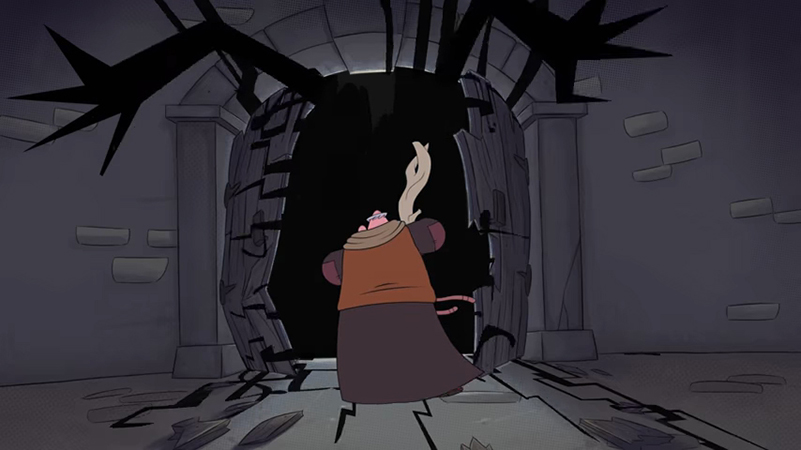
Another balancing act that starts out rough and improves as the show progresses is the character development and interactions. Leo is portrayed as a good nature boy, but as a teenager is more prone to impatiences and lack of focus that he will argue with the others. This does make him less likeable at times, but at least the narrative allows for him to grow in maturity as the adventure progresses. The Quixote-like Don Andrés is the more cowardly of the bunch and tends to ramble, only it comes off quite one-dimensional often. Alebrije, as the primary comic relief, displays the occasional obliviousness while being the loyal supporter, but there are moments where it just seems like he’s there because they needed someone to be. Teodora’s story is very peculiar and interesting. But it raises many eyebows about how a 21st century girl, and her functioning smartphone, end up in the early 19th century. They do end up getting explained in the last few episodes, which turn out to be a real doozy.
The chemistry between the protagonists comes off a bit cliché. And they tend to fight simply to serve whenever the episode’s plot calls for them to, which seems often. The improvements come when Marcella, a mysterious girl who becomes Leo’s love interest right from the start of the first episode, manages to join the group midway through. The resulting dynamic begins to flow better, and not necessarily in a typical manner. And when her story gets explained it’s a bit of a doozy as well. Also, unbeknownst to the heroes until much later in the series, there are two sugar skull-head children named Finado and Moribunda. They are included to secretly help the team along. The explanation for their presence adds intrigue to the overall narrative.
If you can manage to get through these early rough patches, you may find yourself really enjoying the show. The pacing can still be an issue at times, but from the fourth episode onward the storytelling strengthens and really kicks into gear. This is the point where the main plot begins to push forward and the heroes are not just facing a monster-of-the-week type of stop on their journey just for the sake of it. Speaking of which, there’s great fascination with the monster-of-the-week approach as it offers an opportunity to explore mythologies and folklore in unique ways that are also to the benefit of the storytelling. Aside from the first and last episode, the other episodes are titled for the creature the heroes encounter and there are moments where history is explored and utilized. This makes for watching the encounters rather thrilling, particularly in the later episodes when the stakes grow higher and higher.
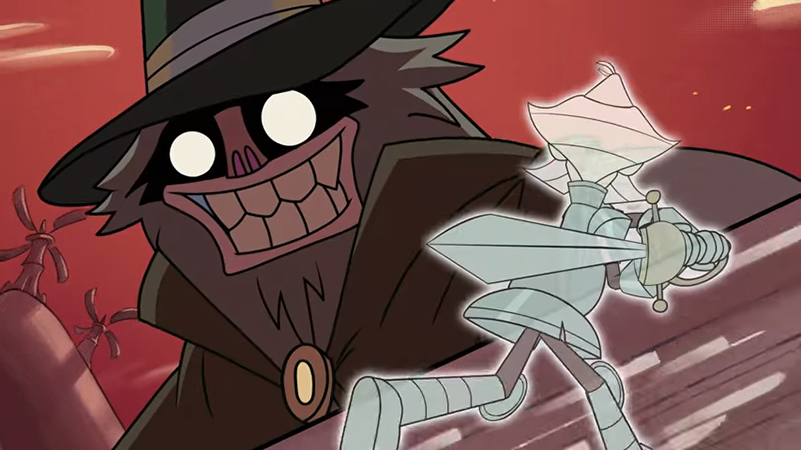
What’s more, it’s not just Mexican folklore that’s explored. The series finds our heroes really traveling the globe, resulting in them encountering creatures of different cultures. These include the Jersey Devil, Vodnik, Golem, and Fenrir. Baba Yaga also appears as a secondary antagonist, both in the unwilling service of Queztocoatl and with her own dark agenda. The use and execution of these legends are done respectfully and very well done. Enough to suspect that audiences will be subtly educated. When done right, like Legend Quest does, that makes the narrative all the more fascinating and fun to watch. It’s clear co-developer Jim Krieg and his writing team really did their homework as they were putting the show together.
The animation is fairly simple. Nonetheless, it’s smooth, so the action moves quite nicely, and they work very well with the design style. There a bit of familiarity, yet uniqueness to the creatures presented. The Night Mart would certainly live up to is intended horror visually and I really like how Fenrir is designed for the show. The colors are not too vibrant, but enough that they don’t clash while also making sure individual characters and objects stand out from the background. I think only once or twice I spotted the use of CG effects for things like rotating the view of the background, but otherwise everything is kept as traditional as possible. This is just a really good looking show, making it all the more fascinating to watch.
I watched the show with the English voice acting. It’s pretty good. There were maybe one or two moments where it seemed like there was a timing issue when someone is saying something off screen, but the emotions of whatever situation the characters were in matched well as do the lip syncing. Some of the creature sounds may seem the same at times, but there are some that are unique even from traditional standards. The Night Mart stands out for me, as does how they approach Fenrir when he speaks. It’s interesting that the music is a little quiet at times, which works well in playing up the thriller aspects of the series. When the music does kick in, they’re nice and fits the mood most of the time.
If you can get through the rough early episodes, you may find Legend Quest to be as good of a series as I felt it was. The animation is nice and the designs are unique. But its the storytelling that really puts this show over. It has some issues with pacing and things don’t really click until nearly halfway through. Yet the core narrative is strong enough to pull you in. With great fascination in exploring mythologies and folklore in a way that’s exciting and rather subtly educational, this is a show that is well worth checking out.
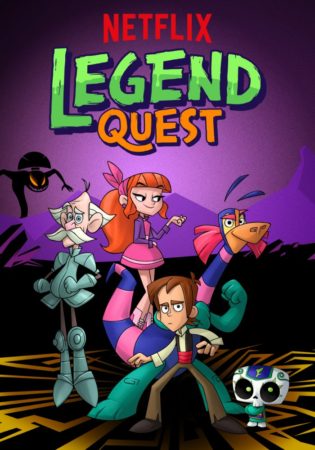 | Legend Quest Ánima Estudios Available only on Netflix Streaming 22 minutes Rated TV-Y7 Developed by Jim Krieg and Ernie Altbacker | |



